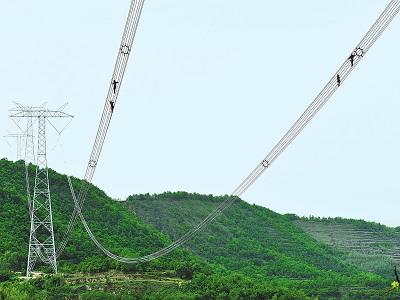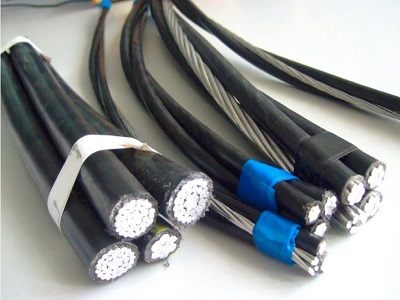
Overhead harness cables are overhead power lines that use multiple insulated phase conductors tightly bundled together, usually with an exposed neutral conductor. This contrasts with the traditional practice of using uninsulated conductors separated by air gaps. This variant of overhead power lines utilizes the same principles as bundled conductors, except they are closer to the point of contact, but each conductor is surrounded by insulation.
The use of overhead cables can greatly reduce various short-circuit faults. Compared with overhead bare conductors, the failure rate is 4-6 times lower.
Advantages of Overhead Cables

ABC can omit one of these connectors. Reduces the risk of only the neutral wire breaking due to tree or vehicle damage. Higher reliability compared to bare conductor overhead and underground systems.
Power supply security is good. The use of overhead cables can greatly reduce personal electric shock casualties. When the overhead cable is energized, when the human body or other animals accidentally touch the insulating surface of the cable, as long as the cable is not broken down, it will not cause harm to people and animals.
Erection and maintenance are convenient. Aerial cables can be run on any type of poles and towers or along walls. In special cases, it can also be directly fixed to the tree pole with hardware through the tree.
Economically reasonable. Although using overhead cables is more expensive than using overhead bare conductors, it is cheaper than ordinary underground installation cables. Therefore, its comprehensive cost is significantly lower, more economical and more reasonable.
Relatively immune to short circuits caused by external forces (wind, fallen branches) unless they wear down the insulation. Can stand near trees/buildings and won’t spark if touched. Almost no tree trimming is required, and installation is simpler as no crossbars and insulators are required.
Failure of Overhead Cables
The main objection to traditional designs is that multiple conductors are considered unattractive and external forces can cause them to touch and short out. The resulting sparks are what cause bushfires in dry climates.
In humid climates, tree growth is a significant problem for overhead power lines. Overhead bundled cables will not arc if they hit a branch. While constant friction is still a problem, the cost of pruning trees can be reduced. Areas where large trees and branches fall off the line are a problem for overhead bundled cables as the line degrades over time. Insulation cracks and breaks due to very large strains can lead to short circuit failures and then ground fires due to dripping of molten insulation.
Low voltage ABC has been developed in several countries around the world and promises to be cheaper, safer, more reliable, require less tree clearing and pruning, be more aesthetically pleasing, require less effort, require less maintenance and eliminate the risk of conductor collisions bushfires.
Here at ZMS, you can get more information about cable products.